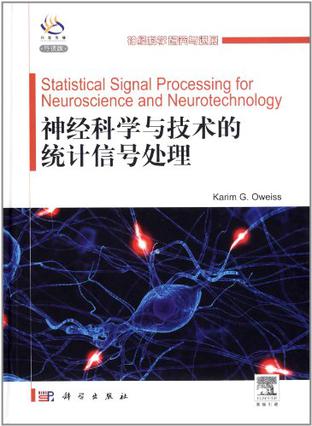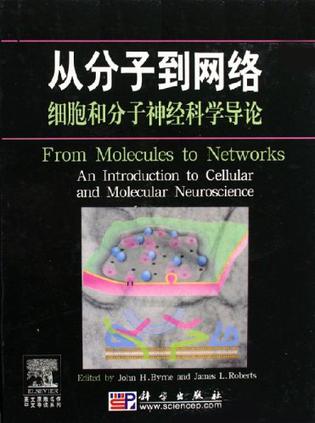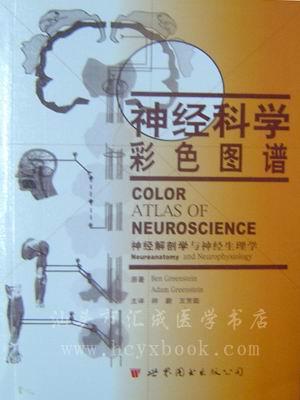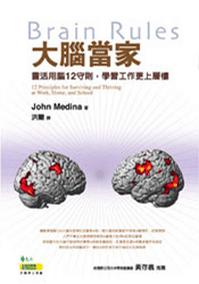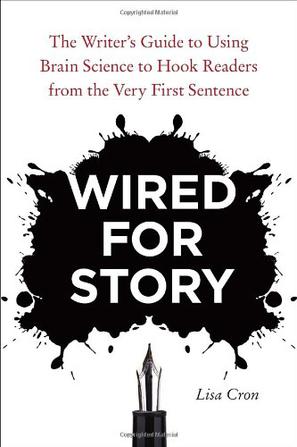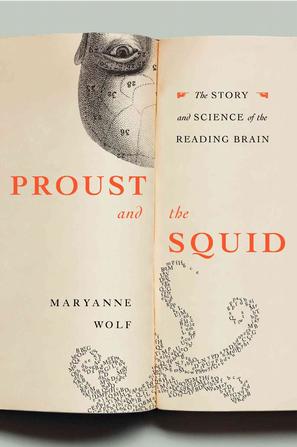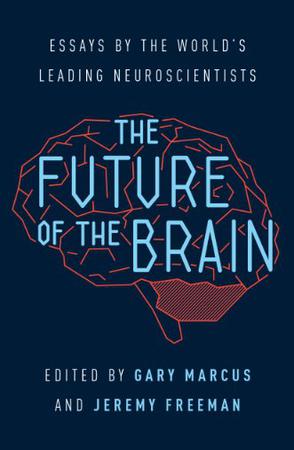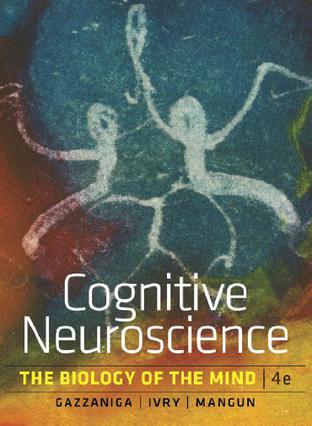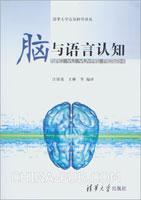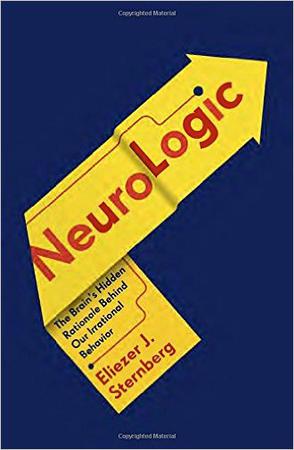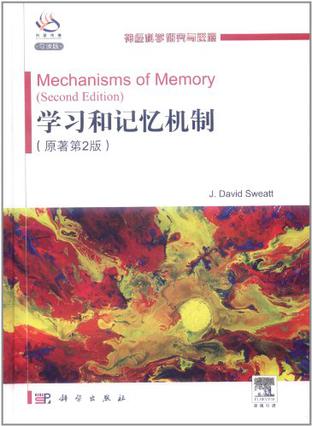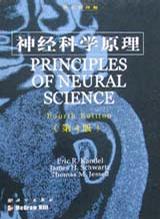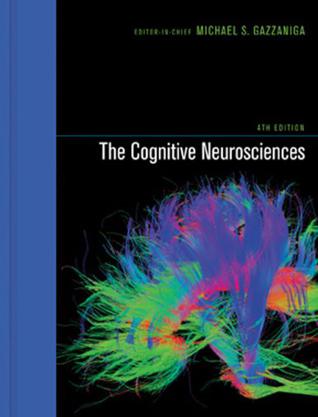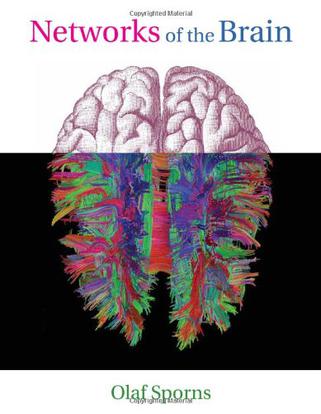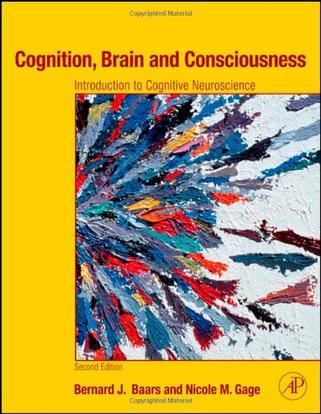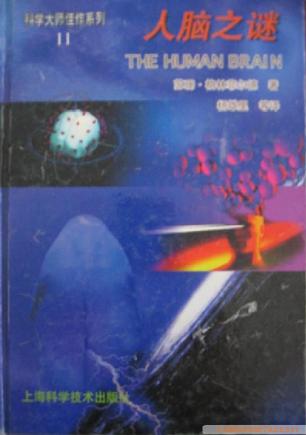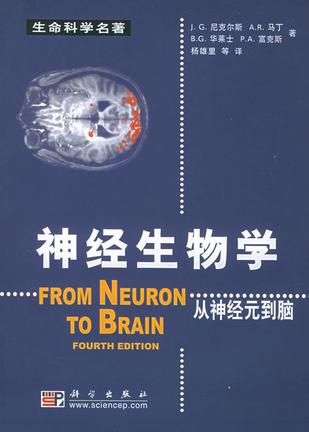欢迎来到相识电子书!
标签:神经科学
-
神经科学与技术的统计信号处理
《神经科学与技术的统计信号处理(导读版)》全面概述了统计信号处理、信息论、机器学习的基本原则、理论和方法,以及它们在神经科学中的应用。作为本领域独一无二的参考书,《神经科学与技术的统计信号处理(导读版)》总结了神经科学中用于解决新兴问题的信号处理、机器学习理论和技术的最新发展,并且特别强调了神经技术的基础和临床应用。《神经科学与技术的统计信号处理(导读版)》是神经工程、神经假体、脑-机接口、计算和系统神经科学、神经信息学、神经生理学等领域的工程研究人员和研究生的理想参考书。 -
从分子到网络
神经元(神经细胞)是构成神经系统的基石,对神经元各个方面的深入、彻底的理解对于我们从各个层次对神经系统进行分析都是十分必要的。本书论述神经细胞的形态学、生物化学、生物物理学基础知识,这些知识正迎合了相关专业的大学生、研究生、科研人员的需要。 2000年诺贝尔生理医学奖获得者Eric R.Kandel盛赞此书:“凭着对神经生理学的独到的、富有创见的阐述,这本书填补了一个亟需填补的空白。 行文清晰,尤其是插图经过了精心设计,图示精美。 每一章的编写才均为该令域的权威和学科带头人。 被专家誉为“神经科学家书架上的必备书”。 -
Vision
David Marr's posthumously published Vision (1982) influenced a generation of brain and cognitive scientists, inspiring many to enter the field. In Vision, Marr describes a general framework for understanding visual perception and touches on broader questions about how the brain and its functions can be studied and understood. Researchers from a range of brain and cognitive sciences have long valued Marr's creativity, intellectual power, and ability to integrate insights and data from neuroscience, psychology, and computation. This MIT Press edition makes Marr's influential work available to a new generation of students and scientists. In Marr's framework, the process of vision constructs a set of representations, starting from a description of the input image and culminating with a description of three-dimensional objects in the surrounding environment. A central theme, and one that has had far-reaching influence in both neuroscience and cognitive science, is the notion of different levels of analysis--in Marr's framework, the computational level, the algorithmic level, and the hardware implementation level. Now, thirty years later, the main problems that occupied Marr remain fundamental open problems in the study of perception. Vision provides inspiration for the continuing efforts to integrate knowledge from cognition and computation to understand vision and the brain. -
大腦當家-靈活用腦12守則.學習工作更上層樓
亞馬遜書店神經科學纇、神經心理學類銷售榜首 雖然我們的一言一行都是由大腦控制,但是大部分人並不清楚自己的大腦到底如何運作。我們對於大腦功能有著許多的疑問:有什麼方法可以增強腦力?我們是怎麼學習的?睡眠和壓力對大腦有什麼樣的影響?為什麼一心多用是個迷思?什麼樣的訊息可以吸引人們的注意?為什麼我們這麼容易忘記?複習新訊息又為什麼對記憶這麼重要?男人和女人有不同的大腦是真的嗎?年紀大的人就不能學習新事物嗎? 目前大腦科學家已經累積了足夠的知識來回答上述問題,這些都是企業家、父母和老師迫切需要知道的。在《大腦當家》一書中,分子生物學家麥迪納博士分享他在大腦科學領域研究的成果,探討大腦知識對於在教室的教學以及在職場的工作能有什麼幫助。書中每一章分別解釋一個大腦守則──科學家所知道的大腦工作方式,然後提出可以改變我們日常生活的建議。 當你了解大腦究竟是如何運作的,就會明白應該如何充分利用大腦。 ▼運動?大腦守則1:運動增強腦力 ▼生存?大腦守則2:大腦也是演化的產物 ▼大腦迴路?大腦守則3:每一個大腦的配線都不相同 ▼注意力?大腦守則4:人們不會去注意無聊的東西 ▼短期記憶?大腦守則5:重複才記得 ▼長期記憶?大腦守則6:記得去重複 ▼睡眠?大腦守則7:睡得好,記得清楚 ▼壓力?大腦守則8:承受壓力的大腦不能如常的學習 ▼感覺的整合?大腦守則9:刺激多重感官,反應更迅速 ▼視覺?大腦守則10:視覺凌駕所有感官 ▼性別?大腦守則11:男性和女性的腦是不一樣的 ▼探索?大腦守則12:我們是不屈不撓的天生探索者 -
Wired for Story
This guide reveals how writers can utilize cognitive storytelling strategies to craft stories that ignite readers’brains and captivate them through each plot element. Imagine knowing what the brain craves from every tale it encounters, what fuels the success of any great story, and what keeps readers transfixed. Wired for Story reveals these cognitive secrets—and it’s a game-changer for anyone who has ever set pen to paper. The vast majority of writing advice focuses on “writing well” as if it were the same as telling a great story. This is exactly where many aspiring writers fail—they strive for beautiful metaphors, authentic dialogue, and interesting characters, losing sight of the one thing that every engaging story must do: ignite the brain’s hardwired desire to learn what happens next. When writers tap into the evolutionary purpose of story and electrify our curiosity, it triggers a delicious dopamine rush that tells us to pay attention. Without it, even the most perfect prose won’t hold anyone’s interest. Backed by recent breakthroughs in neuroscience as well as examples from novels, screenplays, and short stories, Wired for Story offers a revolutionary look at story as the brain experiences it. Each chapter zeroes in on an aspect of the brain, its corresponding revelation about story, and the way to apply it to your storytelling right now. -
Proust and the Squid
Anyone who reads is bound to wonder, at least occasionally, about how those funny squiggles on a page magically turn into "Bare ruined choirs, where late the sweet birds sang" or "After a while I went out and left the hospital and walked back to the hotel in the rain." Where did this unlikely skill called reading come from? What happens in our brain when our eyes scan a line of type? Why do some of us, or some of our children, find it difficult to process the visual information held in words? In Proust and the Squid, Maryanne Wolf, a professor at Tufts University and director of its Center for Reading and Language Research, offers explanations for all these questions, but with an emphasis that is "more biological and cognitive than cultural-historical." This means that Wolf focuses on the physiological character of the human brain, which holds at its disposal "three ingenious design principles: the capacity to make new connections among older structures; the capacity to form areas of exquisitely precise specialization for recognizing patterns in information, and the ability to learn to recruit and connect information from these areas automatically." These "design principles" provide the neuronal foundation of reading, and Wolf spends half her book explaining the evolution and minutiae of this "reading brain." Nearly all this material makes for very hard slogging, even though Proust and the Squid is confidently described as the author's "first book for the general public." (The catchy but utterly uninformative title, by the way, refers to the novelist's impressionistic thoughts about childhood reading and a scientist's use of the squid brain for neurological research.) A work of popularization needs a light clear style, lots of anecdotes and some plot or story line that moves along at a good clip. At times, Wolf makes a stab at including some human-interest element or personal example, but all too soon she reverts to her normal prose, which is austere, technical and, finally, wearisome: "In a pathbreaking meta-analysis of twenty-five imaging studies of different languages, cognitive scientists from the University of Pittsburgh found three great common regions used differentially across writing systems. In the first, the occipital-temporal area (which includes the hypothesized locus of 'neuronal recycling' for literacy), we become proficient visual specialists in whatever script we read. In the second, the frontal region around Broca's area, we become specialists in two different ways -- for phonemes in words and for their meanings. In the third, the multifunction region spanning the upper temporal lobes and the lower, adjacent parietal lobes, we recruit additional areas that help to process multiple elements of sounds and meanings, which are particularly important for alphabetic and syllabary systems." Out of context such prose sounds perfectly dreadful -- and in context sadly characteristic of the writing in professional journals, no matter what the field. In fact, everything Wolf says makes sense, the specialized terms she uses have been previously defined, and there are line illustrations on a facing page. Nonetheless, such technical onslaughts are extremely tiring to read, and Wolf seldom lets up on the information-rich barrage for very long. At different points she does quote passages from Proust and George Eliot, but even these two great novelists are hardly what you'd call sprightly, and they merely add their own specific gravity to already forbidding pages. In the second half of the book, Wolf examines the reading difficulties generally subsumed under the term dyslexia. We learn that one of her sons suffers from this disability, that there are various forms and theories about its origin and character, that it can sometimes result in a special talent for fields that emphasize pattern and spatial creativity (such as art, design and engineering) and that "programs which systematically and explicitly teach young readers phoneme awareness and grapheme-phoneme correspondence are far more successful in dealing with reading disabilities than other programs." As this last sentence makes evident, no relief awaits the once-eager reader who by this point has begun to wonder if he could be suffering from a sudden case of adult-onset dyslexia. Despite Wolf's failure to write a truly popular book, she clearly does know her stuff, and those professionally involved with the teaching of reading might be more patient than I. In particular, she addresses the special needs of children raised in cultures where standard English isn't the dominant language, and she speculates, with real concern, about the impact of computer culture on the "reading brain." Dyslexia has taught her that humans were never genetically designed to read, and this peculiar technique of sustained mental attention could be reduced, reconfigured or even lost in the rising digital age: "Will unguided information lead to an illusion of knowledge, and thus curtail the more difficult, time-consuming, critical thought processes that lead to knowledge itself? Will the split-second immediacy of information gained from a search engine and the sheer volume of what is available derail the slower, more deliberative processes that deepen our understanding of complex concepts, of another's inner thought processes, and of our own consciousness?" Wolf never fully answers these questions, though they strike me as the basis for a much needed book. Still, like any parent with a child transfixed by flashing screens, she is troubled by what she observes. She urges that we "teach our children to be 'bitextual' " or 'multitextual,' able to read and analyze texts flexibly in different ways" so that our sons and daughters don't end up as mere "decoders of information," distracted from the "deeper development of their intellectual potential." Early on in Proust and the Squid, she had noted that infants and toddlers who aren't told stories by their caregivers, who aren't read to from a very early age, nearly always fail to learn to read well themselves. By implication, it may already be too late for many young people: They will never be able to read with the same thoughtfulness and comprehension as their parents. Think about that. -
The Future of the Brain
Including a chapter by 2014 Nobel laureates May-Britt Moser and Edvard Moser An unprecedented look at the quest to unravel the mysteries of the human brain, The Future of the Brain takes readers to the absolute frontiers of science. Original essays by leading researchers such as Christof Koch, George Church, Olaf Sporns, and May-Britt and Edvard Moser describe the spectacular technological advances that will enable us to map the more than eighty-five billion neurons in the brain, as well as the challenges that lie ahead in understanding the anticipated deluge of data and the prospects for building working simulations of the human brain. A must-read for anyone trying to understand ambitious new research programs such as the Obama administration’s BRAIN Initiative and the European Union’s Human Brain Project, The Future of the Brain sheds light on the breathtaking implications of brain science for medicine, psychiatry, and even human consciousness itself. Contributors include: Misha Ahrens, Ned Block, Matteo Carandini, George Church, John Donoghue, Chris Eliasmith, Simon Fisher, Mike Hawrylycz, Sean Hill, Christof Koch, Leah Krubitzer, Michel Maharbiz, Kevin Mitchell, Edvard Moser, May-Britt Moser, David Poeppel, Krishna Shenoy, Olaf Sporns, Anthony Zador. -
脑与语言认知
《清华大学认知科学译丛:脑与语言认知》收集了来自Nature、Science、Brain and Language、NeuroImage、Brain and Cognition、Proceedings of the National Academy of Science(PNAS)等近年来欧美顶级国际学术期刊中数十篇有关脑与语言认知方面的文章,知识新颖,内容丰富,代表了本学科发展的国际前沿。《清华大学认知科学译丛:脑与语言认知》编译的目的是探索词汇在人脑中的表达方法和操作方式,探索它们的构建原理和计算理论,探索脑认知规律,改善我们对自然语言的认识,促进语言学、认知科学、人工智能等学科的发展,脑的理论模型对认知科学和人类语言理解有重大意义。《清华大学认知科学译丛:脑与语言认知》还将为我们实验方法的有效性解释提供建议,使我们能够用计算机理解语言并创建新方法。书中的很多内容在清华大学本科生和研究生课程中进行了讲授,深受广大学生的欢迎和好评。从书中可以看出顶级科学家开阔的观察视野、奇特的研究思路,这些内容和结果均来自于实验,保证了结论的真实性、可靠性。本书内容广泛,丰富多彩,图文并茂,集权威性、真实性、趣味性、新颖性、知识性和综合性子一体。全书共分6章。本书可以为该领域的研究人员节约大量的收集英文资料和阅读资料的宝贵时间,使之在较短的时间内系统全面地了解该领域进展。本书可作为大脑认知、脑神经成像、语言学、神经语言学、认知语言学、计算语言学等领域的研究人员和高等院校、科研院所本科生、研究生的参考书。 -
NeuroLogic
A groundbreaking investigation of the brain’s hidden logic behind our strangest behaviors, and of how conscious and unconscious systems interact in order to create our experience and preserve our sense of self. From bizarre dreams and hallucinations to schizophrenia and multiple personalities, the human brain is responsible for a diverse spectrum of strange thoughts and behaviors. When observed from the outside, these phenomena are often written off as being just “crazy,” but what if they were actually planned and logical? NeuroLogic explores the brain’s internal system of reasoning, from its unconscious depths to conscious decision making, and illuminates how it explains our most outlandish as well as our most stereotyped behaviors. From sleepwalking murderers, contagious yawning, and the brains of sports fans to false memories, subliminal messages, and the secret of ticklishness, Dr. Eliezer Sternberg shows that there are patterns to the way the brain interprets the world—–patterns that fit the brain’s unique logic. Unraveling these patterns and the various ways they can be disturbed will not only alter our view of mental illness and supernatural experience, but will also shed light on the hidden parts of ourselves. -
学习和记忆机制
《学习和记忆机制(原著第2版)(导读版•英文版)》迄今为止,人类遇到的最复杂莫测的生物学过程无疑是人类自身的认知与记忆。《学习和记忆机制(原著第2版)(导读版)》作者系统地介绍了学习和记忆的细胞和分子机制,主要集中在介绍学习和记忆的动物实验研究结果,将复杂的生物化学问题与记忆结合起来。《学习和记忆机制(原著第2版)(导读版•英文版)》适合作为心理学、脑科学、神经生物学等专业高年级本科生和一、二年级研究生的课程用书,以及从事该领域研究人员的参考书。 -
The Cognitive Neurosciences, 4th Edition
Each edition of this classic reference has proved to be a benchmark in the developing field of cognitive neuroscience. The fourth edition of The Cognitive Neurosciences continues to chart new directions in the study of the biologic underpinnings of complex cognition—the relationship between the structural and physiological mechanisms of the nervous system and the psychological reality of the mind. The material in this edition is entirely new, with all chapters written specifically for it. Since the publication of the third edition, the field of cognitive neuroscience has made rapid and dramatic advances; fundamental stances are changing and new ideas are emerging. This edition reflects the vibrancy of the field, with research in development and evolution that finds a dynamic growth pattern becoming specific and fixed, and research in plasticity that sees the neuronal systems always changing; exciting new empirical evidence on attention that also verifies many central tenets of longstanding theories; work that shows the boundaries of the motor system pushed further into cognition; memory research that, paradoxically, provides insight into how humans imagine future events; pioneering theoretical and methodological work in vision; new findings on how genes and experience shape the language faculty; new ideas about how the emotional brain develops and operates; and research on consciousness that ranges from a novel mechanism for how the brain generates the baseline activity necessary to sustain conscious experience to a bold theoretical attempt to make the problem of qualia more tractable. -
连接组:造就独一无二的你
★《华尔街日报》2012年度十佳非虚构图书 ★亚马逊网站2012年编辑选择之百佳图书 ★《出版人周刊》2012年春季十佳科学类图书 【内容简介】 基因组让你成为人,连接组让你成为你。 每个人都是独特的,我们早就清楚这一点,但科学家一直没有弄明白人的独特性体现在哪里。承现 峻认为,它就藏在大脑神经元的连接方式中。连接组(connectome)是指神经系统中神经元连接的总和,是遗传和生活经历发生相互作用的结果,是先天与后天的结合点。 承现峻的文字优雅清晰,富于幽默感,他在书中介绍了神经科学的发展历程、基础知识,以及连接组学的研究方法与成果。这项工作如同攀登科学界的珠穆朗玛峰,如果成功,将为个性、智能、记忆等的研究提供基础,对孤独症、阿尔茨海默症、精神分裂症等精神疾病的治疗产生极大影响,人工智能也将由此获得希望。 【媒体评论】 著名神经科学家承现峻教授用生动的笔触,描写了世界各国神经科学家正在开展的一项探索大脑奥秘的宏伟工程——连接组计划。 ——蒲慕明(美国科学院院士 中国科学院上海神经科学研究所所长) 这是一部重要的作品,体现了人类追寻自我的迷人历程,书中的知识让人耳目一新。 ——菲利普•夏普(Phillip A. Sharp,1993年诺贝尔生理学或医学奖得主) 承现峻简直无所不能。他是公认的超级物理学家、电脑奇才、神经科学领域的开路人,这本书证明他还是个出色的作家。 ——史蒂文•斯特罗加茨(Steven Strogatz,康奈尔大学数学系教授) -
婴儿研究和神经科学在心理治疗中的运用
在我们理解婴儿是如何发展,以及当婴儿注视母亲时他们大脑的哪些部分被激活等方面,婴儿研究和神经科学已经取得了引人瞩目的成绩。但是,这些研究扩展到了实验室之外了吗?对于一般的治疗师或助人的专业人士来说,患者就坐在他们面前向他们寻求指导,而这些研究又意味着什么? 在这本书里,经验丰富的心理治疗师和精神分析师Judith Rustin对这些研究加以拆解,揭示了它们在治疗室中的应用以及它们的含义。 正如我们已然了解的,在照看者和婴儿之间,指导着他们相互调节的大脑过程—以及伴随的安全和自我发现的感受—也同样地发生在临床工作者和来访者之间。正如Rustin演示的,这些大脑过程教给我们很多关于治疗关系的新知识,并为有效沟通和干预开辟了很多条新的富有创造力的途径。 -
Networks of the Brain
Over the last decade, the study of complex networks has expanded across diverse scientific fields. Increasingly, science is concerned with the structure, behavior, and evolution of complex systems ranging from cells to ecosystems. Modern network approaches are beginning to reveal fundamental principles of brain architecture and function, and in Networks of the Brain, Olaf Sporns describes how the integrative nature of brain function can be illuminated from a complex network perspective. Highlighting the many emerging points of contact between neuroscience and network science, the book serves to introduce network theory to neuroscientists and neuroscience to those working on theoretical network models. Brain networks span the microscale of individual cells and synapses and the macroscale of cognitive systems and embodied cognition. Sporns emphasizes how networks connect levels of organization in the brain and how they link structure to function. In order to keep the book accessible and focused on the relevance to neuroscience of network approaches, he offers an informal and nonmathematical treatment of the subject. After describing the basic concepts of network theory and the fundamentals of brain connectivity, Sporns discusses how network approaches can reveal principles of brain architecture. He describes new links between network anatomy and function and investigates how networks shape complex brain dynamics and enable adaptive neural computation. The book documents the rapid pace of discovery and innovation while tracing the historical roots of the field. The study of brain connectivity has already opened new avenues of study in neuroscience. Networks of the Brain offers a synthesis of the sciences of complex networks and the brain that will be an essential foundation for future research. -
Cognition, Brain, and Consciousness, Second Edition
This is the fully revised and updated second edition of the very sucessful introductory textbook on cognitive neuroscience. Written by two leading experts in the field, thisbook takes a unique thematic approach to introduce concepts of cognitive neurosciences, guiding students along a clear path to understand the latest findings whether or not they have a background in neuroscience. New to this edition are Frontiers in Cognitive Neuroscience text boxes; each one focuses on a leading researcher and their topic of expertise. There is a new chapter on Genes and Molecules of Cognition, and all other chapters have been thoroughly revised, based on the most recent discoveries. New edition of a very successful textbook Completely revisedto reflect new advances, and feedback from adopters and students Includes a new chapter on Genes and Molecules of Cognition Student Solutions available at http://www.baars-gage.com/ For Teachers: Rapid adoption and course preparation: A wide array of instructor support materials are available online including PowerPoint lecture slides, a test bank with answers, and eFlashcords on key concepts for each chapter. A textbook with an easy-to-understand thematic approach: in a way that is clear for students from a variety of academic backgrounds, the text introduces concepts such as working memory, selective attention, and social cognition. A step-by-step guide for introducing students to brain anatomy: color graphics have been carefully selected to illustrate all points and the research explained. Beautifully clear artist's drawings are used to 'build a brain' from top to bottom, simplifying the layout of the brain. For students: An easy-to-read, complete introduction to mind-brain science: all chapters begin from mind-brain functions and build a coherent picture of their brain basis. A single, widely accepted functional framework is used to capture the major phenomena. Learning Aids include a student support site with study guides and exercises, a new Mini-Atlas of the Brain and a full Glossary of technical terms and their definitions. Richly illustrated with hundreds of carefully selected color graphics to enhance understanding. -
神经生物学
本书是神经生物学领域内的一本世界级名著,本版为跨世纪的第4版。内容涵盖了神经生物学的许多重要方面,系统介绍了神经生物学的基本概念、神经系统的功能及其细胞和分子机制。作者应用许多生动的实例,通过严密的逻辑组织起来,以展示神经生物学的发展脉络。结合300余幅制作精良的插图,为读者提供了这门重要学科的一幅有内在联系的全景图。全书把神经生物学的基本原理和近年进展紧密结合起来,文笔流畅,深入浅出,对相关领域的学生、教授和研究人员均是一本有用的参考书。
热门标签
下载排行榜
- 1 梦的解析:最佳译本
- 2 李鸿章全传
- 3 淡定的智慧
- 4 心理操控术
- 5 哈佛口才课
- 6 俗世奇人
- 7 日瓦戈医生
- 8 笑死你的逻辑学
- 9 历史老师没教过的历史
- 10 1分钟和陌生人成为朋友

